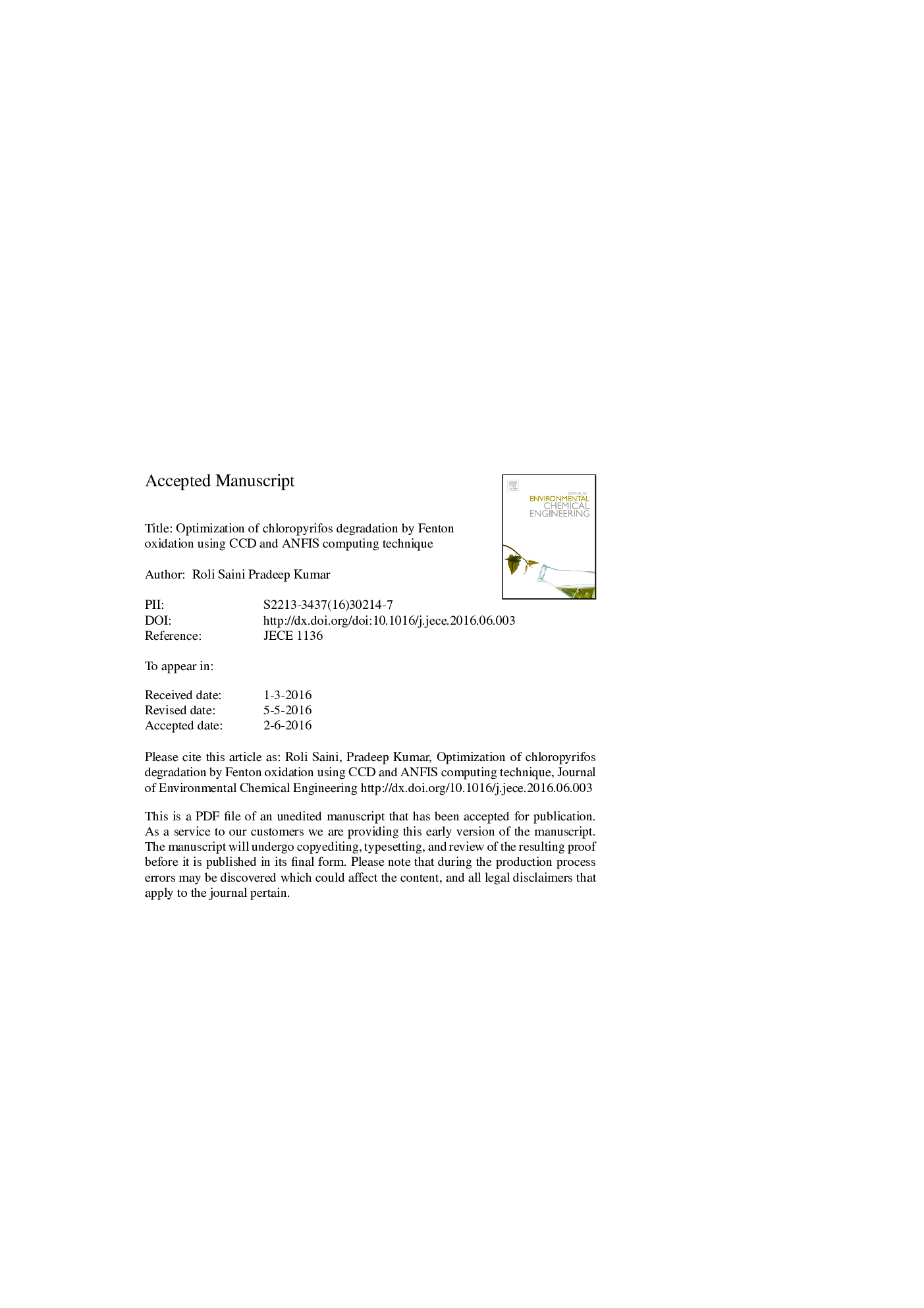| Article ID | Journal | Published Year | Pages | File Type |
|---|---|---|---|---|
| 221562 | Journal of Environmental Chemical Engineering | 2016 | 41 Pages |
Abstract
The response surface methodology (RSM) and adaptive neuro-fuzzy inference system (ANFIS) have been used for optimization and simulation of the treatment of chlorpyrifos (CPF) bearing wastewater using the Fenton oxidation process. The smearing RSM based central composite design (CCD) method has been used to design the experiments, develop regression models, optimize and evaluate the effects of three independent parameters i.e. initial pH, H2O2 and catalyst concentrations on the removal efficiency. ANFIS has been applied for the evaluation of the removal efficiency of pesticide (chlorpyrifos). The efficacy of the ANFIS models has been judged through the correlation coefficient (R), mean squared error (MSE) and root mean squared error (RMSE). Results indicate that the predictions of the RSM and ANFIS models are in good agreement with experimental data for both the responses. At the optimum conditions initial pH 3, H2O2 dose 0.571Â mol/L, Fe2+ dose 3Â g/L, the maximum reduction in CPF concentrations are predicted as 78.6, 94 and 89.34%, respectively and corresponding COD reductions are observed as 68.94, 83.51 and 74.44%, respectively.
Keywords
Related Topics
Physical Sciences and Engineering
Chemical Engineering
Chemical Engineering (General)
Authors
Roli Saini, Pradeep Kumar,
